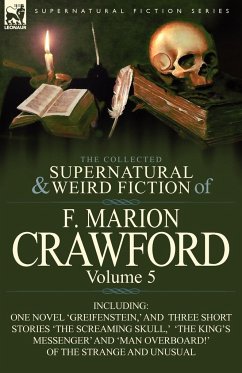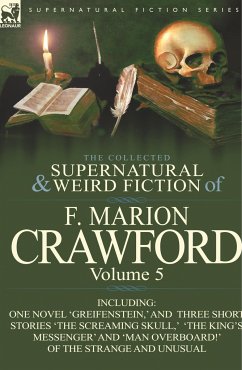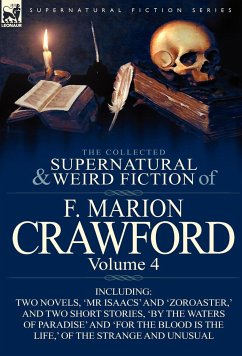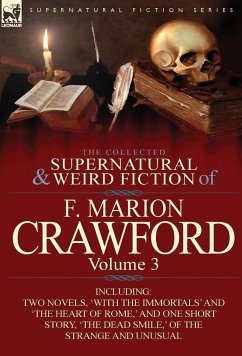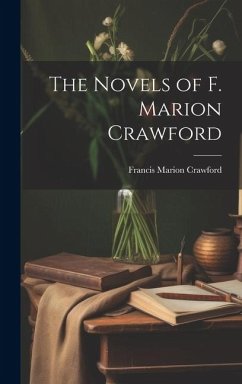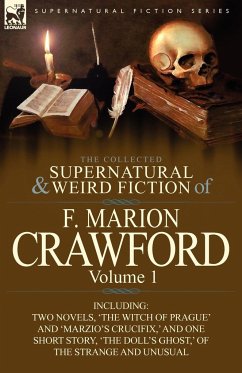
The Collected Supernatural and Weird Fiction of F. Marion Crawford
Volume 1-Including Two Novels, 'The Witch of Prague' and 'Marzio's Crucifix, ' and
Versandkostenfrei!
Versandfertig in 1-2 Wochen
31,99 €
inkl. MwSt.

PAYBACK Punkte
16 °P sammeln!
Volume one of a collection of supernatural and weird tales by a forgotten master of the gothic and occult Although an American author, writer F(rancis) Marion Crawford was born in Northern Tuscany, the son of sculptor Thomas Crawford, he spent much of his life in the United States, living and working in Boston. His inherent sensitivity to Italy influenced much of his historical fiction. Indeed, in his novel 'Corleone,' Crawford became the first author to prominently feature the now very familiar theme of the Mafia in fiction. He also produced notable works of history concerned with the various...
Volume one of a collection of supernatural and weird tales by a forgotten master of the gothic and occult Although an American author, writer F(rancis) Marion Crawford was born in Northern Tuscany, the son of sculptor Thomas Crawford, he spent much of his life in the United States, living and working in Boston. His inherent sensitivity to Italy influenced much of his historical fiction. Indeed, in his novel 'Corleone,' Crawford became the first author to prominently feature the now very familiar theme of the Mafia in fiction. He also produced notable works of history concerned with the various ages of Italy. Travels in the East and the study of Sanskrit in India gave him a grounding in the oriental and an interest in the other worldly. Although the themes of supernatural and weird fiction are often believed to be expressed to best effect in the short story most of Crawford's literary output consisted of novels. Fortunately, several of these include distinctly fantastical themes. His comparatively small oeuvre of short ghost and horror tales is so finely crafted that they have become some of the most highly regarded examples of the form in the English language. M. R James considered some of them to be among the best supernatural stories written, with the chilling and claustrophobic 'The Upper Berth' being especially singled out for merit. Crawford's talent for this genre is so widely acknowledged that it has been rightly noted that the greatest shame was that he did not write more-praise indeed! This five volume Leonaur collection of Crawford's strange novels, novellas and short stories provides a superb and substantial collection by one of Americas finest nineteenth century authors. This first volume includes the novel 'The Witch of Prague,' a tale of obsession at the core of which is a woman of extraordinary powers aided by her familiar Arabian dwarf; a second novel 'Marzio's Crucifix' and the short story 'The Doll's Ghost,' probably the first story using the now familiar theme of a doll seems possessing a terrible 'life' of its own. Leonaur editions are newly typeset and are not facsimiles; each title is available in softcover and hardback with dustjacket.






